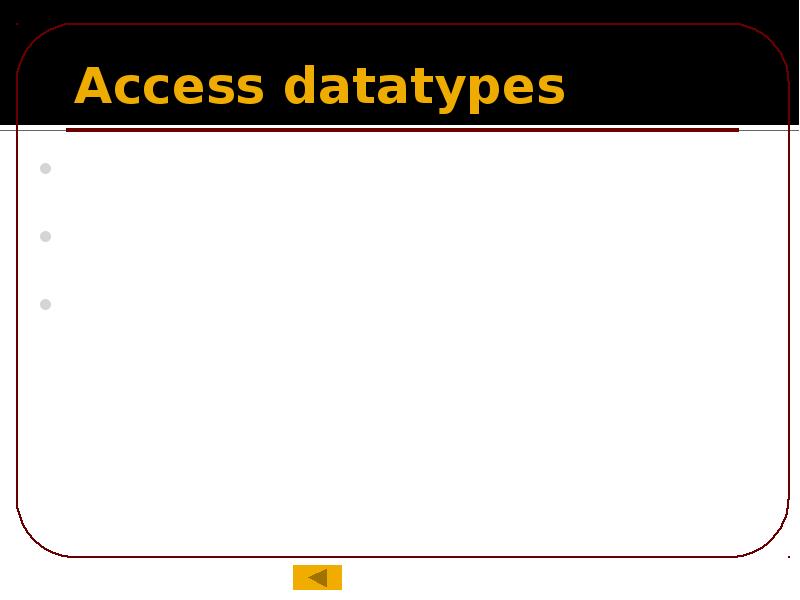Design of databases презентация
Содержание
- 2. Definitions Database (DB) ─ is a collection of interrelated data organized
- 3. Definitions Each database contains information about a specific object class. The
- 4. Definitions MS Access DBMS uses a relational data model, in which
- 5. Definitions Relational database - data is presented in the form of
- 6. Access DBMS usage Small business (accounting, management information about orders, customers,
- 7. Table Table – is an object that is used to define
- 8. Query Query - is an object that can retrieve information from
- 9. Form Form - is an object that creates a user-friendly interface
- 10. Report Report - is an object to create printer-friendly output of
- 11. Macro Macro - a facility designed for the automation of several
- 12. Module Module - an object that represents a program in VBA,
- 13. Creation of objects
- 14. Access datatypes
- 15. Access datatypes
- 16. Access datatypes
- 17. Database design steps Formulation of the main problems that must be
- 18. Table creation During grouping of fields in the table, use the
- 19. Table creation 3. For each primary key field values should fully
- 20. Normal forms Database can consist of several tables, each of which
- 21. Normal forms 1NF (or universal relation) - is such a table,
- 22. Links between relation
- 23. Скачать презентацию






















Слайды и текст этой презентации
Похожие презентации





























